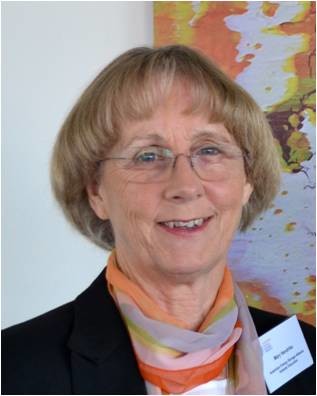Insights 2017: Mary Hendriks

What new technologies are you seeing gain traction in Australia?
Delivery of energy is being reinvented globally, integrating more innovative and distributed generation from low-carbon sources such as solar, wind, wave and tidal power for our electricity supply. Australia is leading globally in the per capita uptake of residential solar PV panels, with an amazing 1.5 million solar rooftops across the country.
Many of these home and business owners are now looking to self-consume more of their own power by storing their excess power from sun or wind in battery storage systems. Being able to have your own power, when and where you need it, even during a blackout, is creating a whole new industry sector for energy companies, and will change the way we consume, sell and pay for electricity.
The electrification of transport is also underway, with many innovations in electric vehicles. China is drafting laws to direct that one in seven new cars sold will be electric, and the Mayors of Paris, Mexico City, Madrid and Athens are the first to ban diesel vehicles by 2025, the same year that Amsterdam plans to have an all-electric bus fleet. This transition to electric vehicles is well underway in Northern Europe and in parts of North America. This is also happening here, albeit slowly as Australia lags behind in the electrification of transport.
Renewable Cities Australia 2017 will showcase the implementation of these technologies with presentations from councils, businesses and organisations, sharing the successes of their renewable energy projects. The event will also feature electric vehicle uptake by individuals, governments and by Australian corporations.
How should Australian industry respond to global challenges and competition?
Globally, the challenge is to decarbonise the economy. Many companies are now taking up that challenge at the same time as improving their profitability. Underpinning this profitability is cost of energy and security of supply, key factors in global competitiveness.
In the area of electricity supply, this means more than solar panels and battery storage units. It means modernising our electricity grids and rethinking how power is supplied to our cities, our towns and to our transport infrastructure. It means managing energy demand and being smart about when we use power and when it’s profitable to share or sell our excess electricity.
Many new energy companies are now offering smart services, selling power via innovative retailer business models, or building virtual power plants from aggregated stored power in various energy storage units across many locations. Cities are the hub for these innovations, with leading cities such as San Francisco and San Diego in the US and Vancouver in Canada setting goals to become 100% renewable, and with whole countries in Europe such as Denmark and Portugal also on the same path.
Would more government/industry partnerships assist for business and industry?
In Australia, the city of Adelaide has defined their plan to become carbon neutral, and Canberra’s target is to be powered by renewable energy by 2020. Sydney and Melbourne also have action plans, and NSW has recently launched a Draft Plan to save NSW Energy and Money. Other cities and states have their own programs, and all these will need well thought out input from industry to meet their targets.
Industry partnerships with both local and global companies are key to the success of these initiatives, enabling the transition to low-carbon, smarter electricity supply systems while retaining security of supply.
This applies to the electrification of transport as well. Australia imports the bulk of our transport fuels and our energy security in this area will be strengthened by serious uptake of electric vehicles, particularly for urban-based cars, taxi fleets, small utility vans and buses.
States such as California have provided incentives for the purchase of new plug-in vehicles, with their local utilities taking up the challenge to provide many thousands of EV charging locations. With support from government, Norway is now the leading per capita user of electric vehicles, which are charged from electricity generated from their hydropower.
In Australia, matching large solar or wind power generation with emerging electric vehicle fleets is essential for this process, and that will be driven by government and industry partnerships. At the same time, batteries in these vehicles could potentially become available to the grid when connected, and this two-way interaction offers innovative demand management opportunities.
The Electric Vehicle Council is a supporter of Renewable Cities Australia and will participate in the inaugural EV Workshop at Renewable Cities in 2017, to advocate for this important industry sector.
Are there new job paths for fresh graduates within your industry?
New innovations and disruption leads to whole new career opportunities with collaboration between town planners, computing specialists, designers and energy engineers needing to talk the same language. Skills in economic modelling and legal contracting for these new areas are also in demand, with dual degrees often being desirable and entrepreneurial skills a definite bonus.
The Renewable Cities Young Ambassadors Program was established in 2016 to link young professionals from government and industry to share ideas and take on leadership roles for this new energy era. This program is ongoing, and will again be part of Renewable Cities Australia in Sydney on 14 and 15 June at the International Convention Centre.
Can we really 'electrify everything'?
Energy experts have debated the practicality of achieving full electrification on a global or...
Councils collectively save on energy
Thirteen regional New South Wales councils have pooled their resources to make the shift to...
From coal to clean: accelerating Asia's renewable energy transition
As Asia faces mounting climate challenges and rising energy demands, the push to shift from coal...









